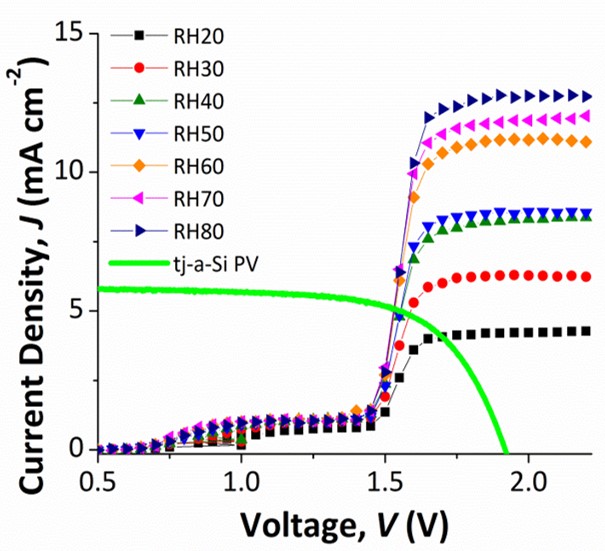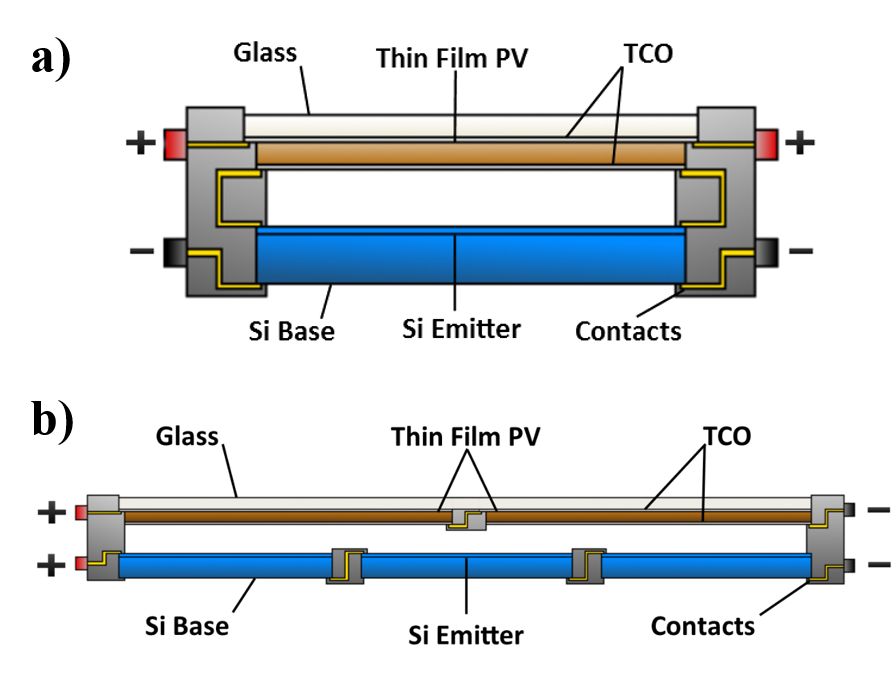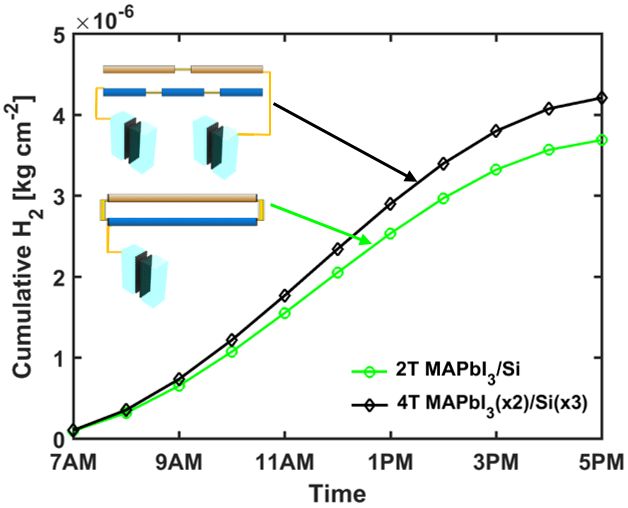Novel Solar Fuels Designs
The nexus between light absorption, electrochemistry, and product separation in an integrated solar fuels device leads to the possibly of unique system designs which are distinct from either solid-state photovoltaics or isolated electrolyzers. Novel designs are needed to simultaneously get to high efficiency and low cost.
There are many convoluted criteria necessary for an efficient artificial photosynthesis system to produce fuels at high efficiency from the energy of sunlight. Concerns include the high absorption of light in appropriate photoactive semiconductors, low overpotential catalysts, product separating membranes, minimizing ohmic resistance losses, corrosion and stability issues, and others. This nexus of intricate design parameters provides unique opportunities to engineer novel approaches to complete solar fuels generation systems which are distinct from the criteria needed to optimize stand-alone photovoltaics and/or electrolyzers. Conn Center work in this area has included solar hydrogen production directly from ambient humidity, the modeling of non-monolithic tandem solar cells to match specific electrolysis reactions, and tandem semiconductor particles for slurry reactors.



